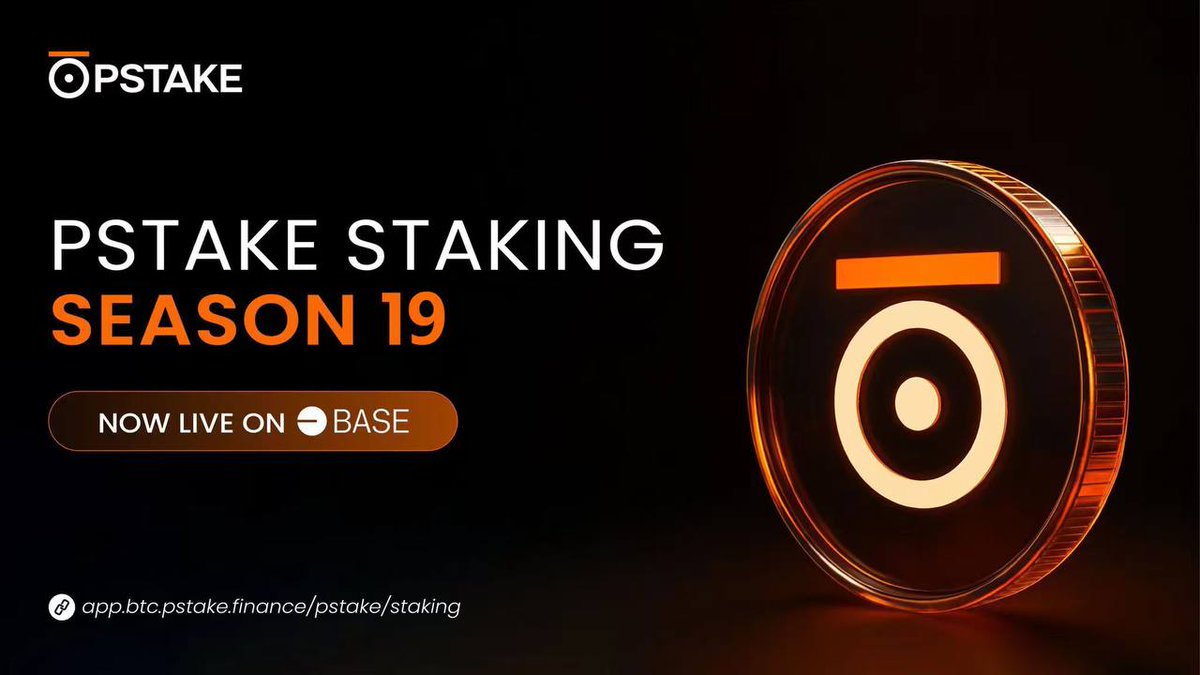Цена pSTAKE Finance
в EUR

О pSTAKE Finance
Дисклеймер
OKX не дает рекомендаций по инвестированию и хранению активов. Тщательно оцените свою финансовую ситуацию и определите, подходит ли вам торговля и владение цифровыми активами. По вопросам, связанным с вашими конкретными обстоятельствами, обращайтесь к специалистам в области законодательства, налогов или инвестиций. С подробностями можно ознакомиться, изучив Условия использования и Предупреждение о рисках. Переходя на сайты третьих сторон («Сторонние сайты»), вы принимаете их условия использования. OKX и ее партнеры («OKX») не связаны с владельцами и руководителями Сторонних сайтов, если иное не указано в письменной форме. Вы соглашаетесь с тем, что OKX не несет ответственности за убытки, ущерб и любые другие последствия использования Сторонних сайтов. Помните, что использование Сторонних сайтов может привести к полной или частичной потере активов. Продукт может быть доступен не во всех юрисдикциях.
Динамика цен pSTAKE Finance
pSTAKE Finance в соцсетях
Руководства

Создание бесплатного аккаунта OKX.
Пополнение аккаунта.
Выбор криптовалюты.
Вопросы и ответы о pSTAKE Finance
pSTAKE Finance (PSTAKE) - это протокол ликвидного стейкинга, построенный на блокчейне Persistence. Платформа позволяет пользователям беспрепятственно и эффективно стейкировать свои активы, включая нативные монеты с различных блокчейнов.
Одним из ключевых преимуществ pSTAKE Finance является возможность раскрытия стоимости монет, поставленных на стейкинг. Участвуя в ликвидном протоколе платформы, пользователи получают вторичные токены, представляющие их активы. Эти токены могут свободно использоваться в различных децентрализованных финансовых протоколах (DeFi), предоставляя пользователям дополнительные возможности для получения вознаграждения и максимизации полезности в экосистеме DeFi.
Вы можете без труда приобрести токены pSTAKE на криптовалютной платформе OKX. Доступные торговые пары в терминале спотовой торговли OKX включают PSTAKE/USDT.
Обменяйте имеющиеся у вас криптовалюты, включая Биткойн (BTC), Эфириум (ETH), Tether (USDT) и USD Coin (USDC), на pSTAKE с нулевой комиссией и без проскальзывания цены с помощью OKX Конвертации.
Откройте для себя pSTAKE Finance
Компания pSTAKE Finance (PSTAKE) является одним из ведущих игроков в быстро развивающемся секторе децентрализованных финансов (DeFi). В то время как криптовалюты традиционно ограничивались долгосрочным инвестированием и краткосрочной торговлей, с появлением DeFi возник широкий спектр децентрализованных банковских услуг. Среди этих услуг популярностью пользовался стейкинг, который привлек внимание многочисленных проектов в этой области. pSTAKE Finance выделяется как инновационная платформа для стейкинга, предлагающая своим пользователям уникальные возможности и функционал.
Что такое pSTAKE Finance?
pSTAKE Finance - это решение для ликвидного стейкинга, которое призвано раскрыть весь потенциал токенов PoS, обеспечив ликвидность для стейковых активов. Протокол разработан для извлечения базовой стоимости активов, размещенных на цепочках PoS.
Одной из уникальных особенностей pSTAKE Finance является распределение вознаграждения за стейкинг в pTOKENS, независимо от того, на какой цепочке размещены стейкинговые активы. Протокол сотрудничает с проверенными валидаторами из различных цепочек первого слоя, включая Stake-fish, Chorus One и Everstake, что обеспечивает надежность и безопасность процесса размещения средств.
Команда проекта pSTAKE Finance
Команда проекта pSTAKE Finance состоит из основателей Тушара Аггарвала и Дипаншу Трипатхи. Аггарвал также занимает должность генерального директора компании Persistence, а Трипатхи - технического директора. Кроме того, в состав команды входят руководитель проекта Михил Пандей и инженерный руководитель Камлеш Парикаратх Марар.
Как работает pSTAKE Finance?
Принцип работы pSTAKE Finance заключается в обеспечении поддержки PoS-сетей путем хранения токенов pSTAKE. Пользователи могут размещать свои активы в сети pSTAKE, что позволяет им минтить производные токены ERC-20, привязанные 1:1 к исходным активам.
Эти производные токены могут быть использованы в экосистеме DeFi Эфириума, что позволяет пользователям максимизировать свою доходность. Кроме того, эти деривативные токены могут быть распространены на несколько блокчейн-сетей в зависимости от таких факторов, как использование, ликвидность и другие аспекты.
Размещая активы на платформе pSTAKE, пользователи получают преимущество в виде возможности оперативного выхода из своих стейкинговых позиций без какого-либо периода ожидания. Эта возможность выгодна при резких колебаниях цен, позволяя пользователям оперативно реагировать на изменения рынка.
PSTAKE: нативный токен pSTAKE Finance
PSTAKE - это нативная криптовалюта компании pSTAKE Finance, которая была запущена в конце февраля 2022 года. Общий и максимальный объем предложения токенов PSTAKE установлен на уровне 500 миллионов единиц. Однако необходимо отметить, что в обращении находится всего 44.3 миллиона токенов PSTAKE, что составляет около 8.87% от общего количества криптовалюты в обращении.
Сферы использования токенов PSTAKE
Основная сфера использования токена PSTAKE - это стейкинг, что следует из его названия. Кроме того, токен может использоваться для торговли, инвестирования, заимствования, кредитования и предоставления ликвидности на децентрализованных биржах (DEX).
Распределение токенов PSTAKE
Компания PSTAKE распределила свои токены для поддержки роста и развития проекта.
Токены распределились следующим образом:
- Двадцать шесть процентов направляются в фонд развития pStake.
- Двадцать процентов зарезервировано для казначейства компании.
- Двадцать процентов направляется на стратегические продажи.
- Шестнадцать процентов направляется основной команде.
- Шесть процентов предназначены для ретроактивного вознаграждения.
- Пять процентов предназначено исключительно для публичных продаж.
- Три процента выделяется стейкерам XPRT.
- Два процента выделяется на стартовую площадку Alpha.
- Два процента выделяется на бутстраппинг протокола.
pSTAKE Finance: инновационный стейкинговый протокол
pSTAKE Finance - это инновационный стейкинговый протокол, который открывает уникальные возможности для пользователей в секторе DeFi. С помощью pSTAKE Finance пользователи могут максимизировать свои доходы, используя одни и те же монеты, чтобы заработать вдвое больше. Это позволяет им раскрыть дополнительные возможности и получить дополнительные преимущества от функциональности DeFi. Для тех, кто стремится получить прибыль в сфере DeFi, pSTAKE Finance является проектом, заслуживающим внимания и изучения.
Раскрытие данных ESG



































